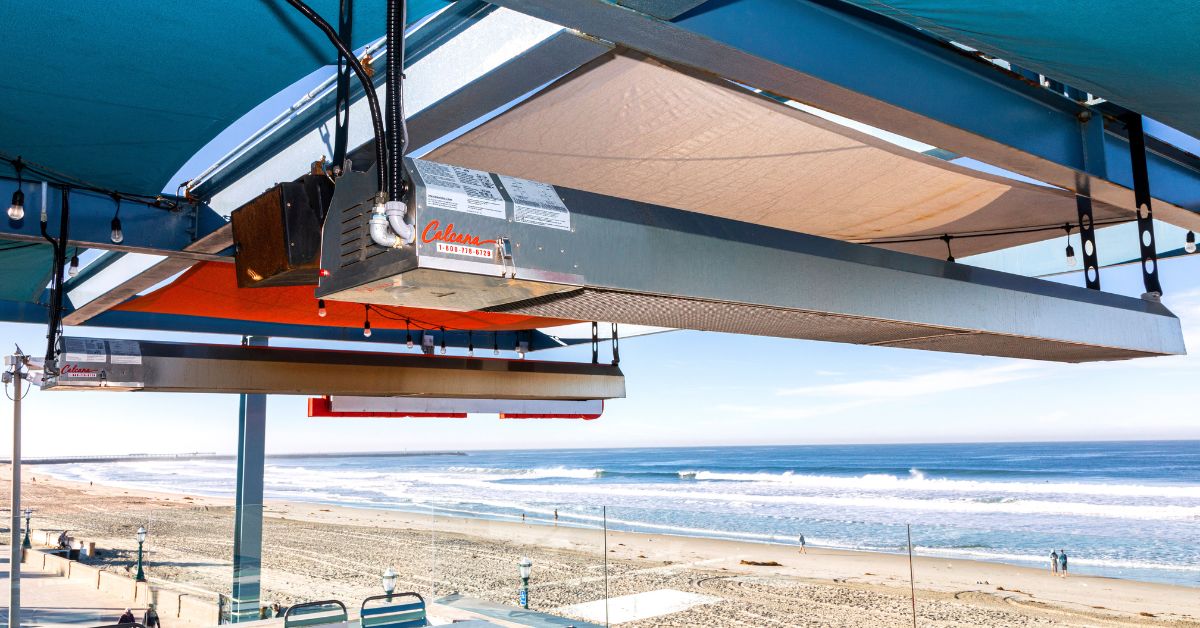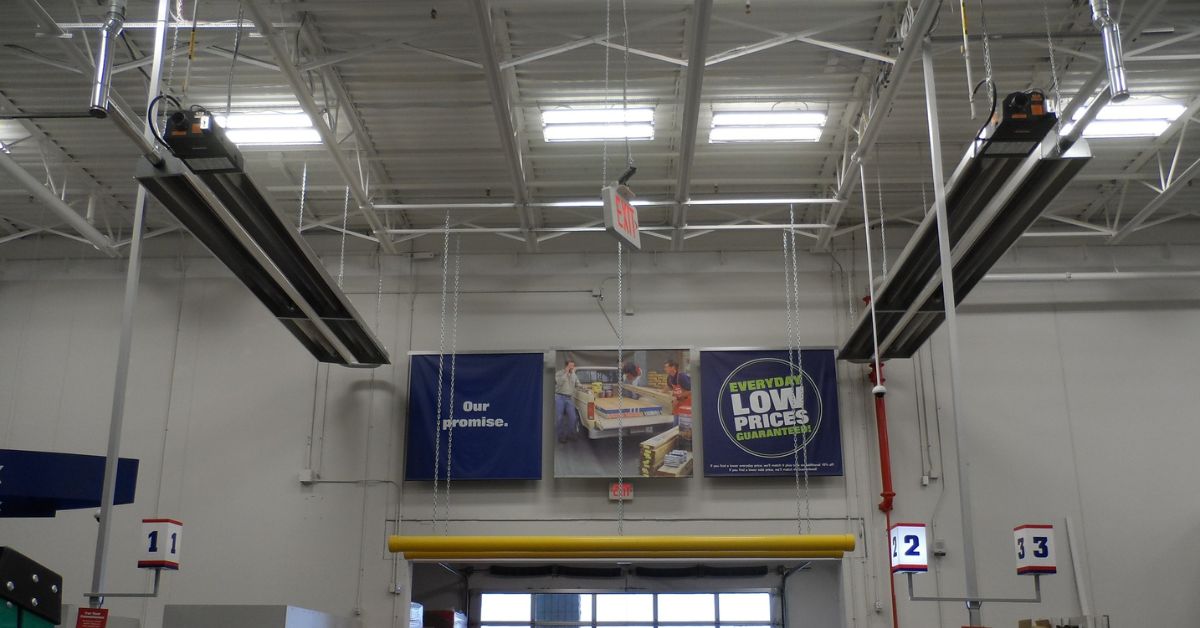Many homeowners use their garage space to store vehicles, indulge in hobbies, or extend the living space. However, they need heating solutions for year-round comfort. Learn how infrared heaters are better than forced-air heaters for garages by discovering the benefits and performance of these handy systems from our specialists at Calcana USA.
Understanding Infrared Heating Technology
Infrared heaters operate on a fundamentally different principle from conventional heating systems. These units emit infrared radiation that directly heats objects, surfaces, and people rather than warming the surrounding air first. Much like the warmth from sunlight, radiant heat transfer creates comfortable conditions, even when ambient air temperatures remain lower.
The infrared heating process begins when electricity passes through heating elements, typically ceramic plates or quartz tubes. It emits infrared rays that immediately warm any solid surface they contact, including your body, tools, workbenches, and vehicles. The heated surfaces then gradually warm the surrounding air through convection.
This direct heating approach offers several advantages over traditional heating methods. You feel warmth almost instantly when you enter the heated zone, so there’s no need to warm up your systems beforehand. Also, the heat penetrates clothing and skin effectively to provide deep, comfortable warmth that persists even after you move away from the direct heat source.
How Forced-Air Systems Work in Garages
Forced-air heating systems, on the other hand, rely on heating the surrounding air then distributing it throughout the space using fans or blowers. These systems typically use natural gas, propane, or electricity to heat air within a combustion chamber or heating element housing. The heated air travels through ductwork or direct discharge to warm the garage space.
The forced-air approach requires the entire air volume within your garage to reach comfortable temperatures before you notice the warmth. This process is time-consuming and energy-intensive, particularly in large garage spaces or poorly insulated areas. Cold concrete floors, metal garage doors, and minimal wall insulation also create substantial heat loss that forced-air systems must constantly overcome.
Forced-air heaters often struggle with air circulation patterns in garage environments. Hot air naturally rises toward the ceiling while cold air settles near the floor where you spend your time. This effect means forced-air systems must work harder to maintain comfortable temperatures at ground level.

Energy Efficiency Advantages of Infrared Heaters
Infrared heating systems deliver better energy efficiency solutions compared to forced-air heaters in garages. The direct heating mechanism eliminates energy losses associated with heating large volumes of air that frequently escape when garage doors open.
Forced-air systems lose substantial amounts of heated air each time you open garage doors for vehicle entry or exit. When the air escapes, this forces the heating system to restart its warming cycle repeatedly. Infrared heaters continue providing radiant heat regardless of air exchanges by maintaining comfort levels without significant energy consumption.
The zone heating capability of infrared systems allows you to heat only the specific areas where you work rather than warming the entire garage space. This targeted approach reduces overall energy consumption with optimal comfort in your primary work zones. With these energy savings, you can install multiple infrared units to create customized heating zones based on your garage layout and usage patterns.
Temperature Control and Comfort Benefits
Infrared heaters provide better temperature control and more consistent comfort compared to forced-air systems. The radiant heat keeps you warm in cool or cold settings. This effect reduces energy costs while improving your experience.
Forced-air systems create temperature fluctuations as heated air cycles on and off to maintain thermostat settings. These temperature swings result in periods of excessive heat followed by uncomfortable cool-downs. Rather than using these unreliable techniques, infrared heaters deliver steady, consistent warmth that eliminates these uncomfortable temperature variations.
The absence of air movement with infrared heating prevents the wind-chill effect common with forced-air systems. Forced-air heaters create air currents that can make you feel colder despite higher ambient temperatures. Instead, infrared radiant heat provides comfortable conditions without unwanted air circulation.
Installation and Maintenance Considerations
Installing infrared garage heaters requires careful attention to mounting locations, electrical connections, and safety clearances. Most infrared units mount to ceilings or walls using heavy-duty brackets that distribute weight evenly across multiple mounting points. If you’re uncertain about the mounting process, always contact a professional for assistance.
Electrical requirements for infrared heaters typically involve dedicated circuits with appropriate amperage ratings for the specific unit capacity. Partnering with a professional ensures that your system complies with local electrical codes and manufacturer specifications. Appropriate electrical connections prevent overheating, voltage drops, and potential safety hazards for a safer environment.
Compared to forced-air systems, maintenance requirements for infrared heaters are minimal. The absence of moving parts, filters, or ductwork allows many homeowners to perform the tasks without guidance from a specialist. With periodic cleaning of heating elements and visual inspections of mounting hardware and electrical connections, homeowners can improve the lifespan of their equipment.
To compare, forced-air systems require regular filter changes, ductwork cleaning, and fan motor maintenance. These ongoing tasks increase long-term operating costs and potential system downtime. Infrared systems avoid these maintenance complications through their simpler design and operation.

Safety Features and Considerations
Infrared garage heaters incorporate multiple safety features that protect against overheating, electrical faults, and accidental contact with hot surfaces. For instance, automatic shut-off systems activate when internal temperatures exceed safe operating limits. Also, many infrared heaters include tip-over switches that immediately shut off power if the unit becomes dislodged from its mounting position.
The radiant heating mechanism removes combustion gases and carbon monoxide concerns associated with gas-fired forced-air heaters. Electric infrared systems produce no emissions, improving indoor air quality and eliminating ventilation requirements. With these features in place, homeowners can create an environment safe for roaming pets, children, or other residents as they navigate the garage.
Cost Analysis and Long-Term Value
Aside from the initial investment, infrared heaters offer lower long-term operating costs than forced-air heaters. Reduced energy consumption, lower maintenance requirements, and longer equipment life contribute to the total cost of ownership over the system’s operational lifetime.
Energy cost savings from infrared heating accumulate significantly over time, particularly in frequently used garage spaces. The ability to heat zones rather than the entire garage reduces unnecessary energy consumption. Infrared heaters typically have longer service lives than forced-air systems due to fewer moving parts and simpler operation. This translates to lower replacement costs and less downtime during the system’s lifetime.
Installing infrared garage heaters requires quality equipment and tools so that they’re stable and energy efficient. At Calcana USA, we offer all kinds of mounting kits and infrared heaters that support your garage space for storage, hobbies, and more. To learn more about our products and services, contact our team for a consultation today!




Leave a comment
This site is protected by hCaptcha and the hCaptcha Privacy Policy and Terms of Service apply.